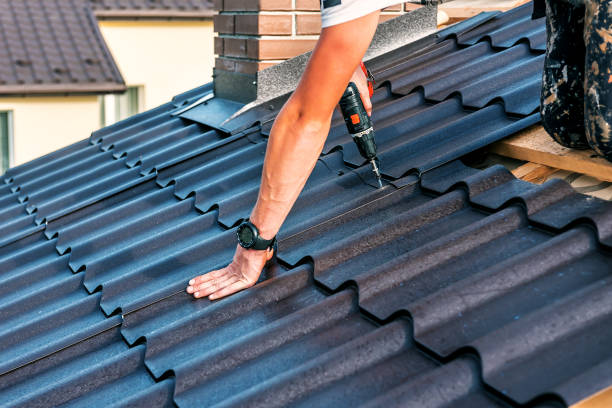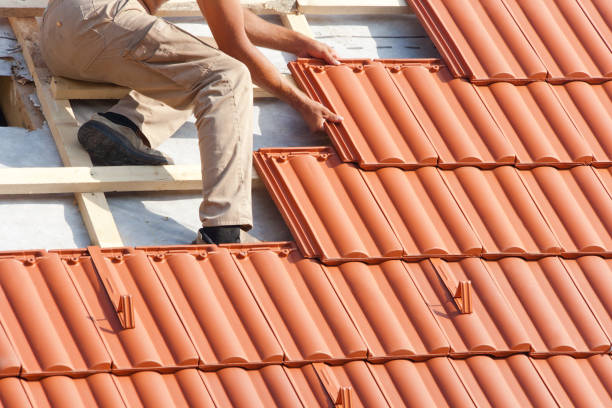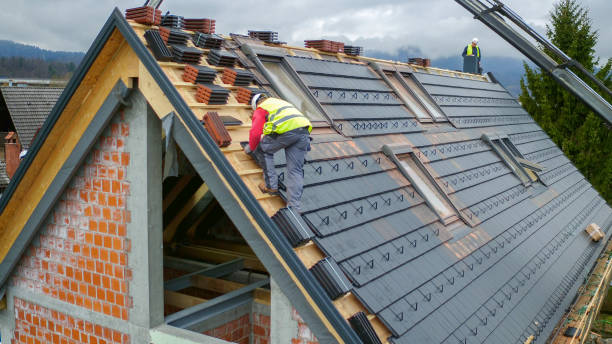Your roof is more than just the “cap” of your home—it’s the ultimate barrier against nature’s elements, from searing sun to relentless rain. Prioritising durability when selecting roofing materials is essential for structural integrity and financial prudence. The wrong choice could lead to expensive repairs, while the right material could last for generations.
This guide outlines six expert strategies to help you make an informed decision, considering every factor from climate to fire resistance. By the end, you’ll know how to select an enduring and aesthetically pleasing roofing material.
1. Evaluate Your Climate and Weather Conditions
The climate in which your home is located plays a vital role in the durability of your roof. Each roofing material offers different levels of resilience to weather elements, and understanding your local climate will ensure you’re choosing the right option.
- Tropical Climates: If you live in an area prone to high humidity, heavy rain, or strong winds, materials like metal roofing or concrete tiles are ideal as they offer resistance to moisture and wind uplift.
- Arid Climates: Clay or slate tiles perform better in areas with extreme heat or high UV exposure due to their natural heat resistance.
- Cold Climates: Regions that experience snow and ice should opt for roofing materials like metal, as snow slides off easily, or slate, which can endure freezing conditions.
Pro Tip: If you live in a hurricane-prone area, choose a material that’s resistant to wind uplift. Look for roofing materials with high wind ratings for maximum protection.
2. Focus on Durability and Lifespan
Not all roofing materials are created equal. Some last for decades, while others may only endure for a few years. Understanding the lifespan of various materials will help you make a long-term investment.
- Metal Roofs: Lifespan of 50+ years; resistant to rain, fire, and wind.
- Slate Tiles: One of the longest-lasting options with a lifespan of 100+ years.
- Clay and Concrete Tiles: Can last 50-100 years, depending on maintenance.
- Asphalt Shingles: Typically last 15-30 years but may require more frequent repairs.
Pro Tip: Slate and clay tiles have higher upfront costs, but their durability justifies the investment, especially if you plan to own your home for decades.
3. Consider Maintenance Requirements
Roof maintenance is often overlooked, but it’s crucial to the longevity of your roof. Some materials require frequent inspection and cleaning, while others demand little upkeep.
- Low-Maintenance Materials: Metal, clay, and slate tiles require minimal maintenance beyond routine inspections.
- High-Maintenance Materials: Wood shingles and asphalt require regular cleaning and repairs, especially after storms.
Pro Tip: Opt for materials that resist mould, algae, and pests. Metal roofing, for instance, is naturally resistant to pest infestations, unlike wood, which is susceptible to termite damage.

4. Choose Energy-Efficient Roofing Options
An energy-efficient roof reduces cooling costs by reflecting heat rather than absorbing it. Some materials are naturally better at this than others.
- Metal Roofs: Reflect heat effectively, especially when coated with reflective finishes.
- Cool Roof Coatings: These coatings can be applied to shingles or tiles to boost solar reflectivity.
- Clay and Concrete Tiles: Naturally insulative, keeping homes cool in hot climates.
Pro Tip: Check for roofing materials with a high Solar Reflectance Index (SRI). The higher the SRI, the more solar heat is reflected, which reduces your cooling bills.
5. Factor in Aesthetic Appeal
Your roof’s appearance significantly affects your home’s overall curb appeal. The material you choose can enhance your home’s architectural style.
- Metal Roofs: Available in sleek, modern finishes and various colours.
- Slate Tiles: Provide a natural, classic look with earthy tones.
- Clay Tiles: Best for Mediterranean, Spanish, or colonial-style homes.
- Asphalt Shingles: Versatile and available in numerous colours to match different home styles.
Pro Tip: If aesthetics matter most, choose a material that enhances your home’s style. Clay tiles look stunning in a Mediterranean-style home, while metal’s sleek finish benefits modern designs.
6. Prioritise Fire Resistance and Safety
Fire safety is crucial, especially in areas prone to wildfires. Some materials are more fire-resistant than others.
- Class A Fire Ratings: Metal, clay, and concrete tiles have the highest fire-resistance ratings.
- Flammable Materials: Wood shingles are highly flammable unless specially treated.
Pro Tip: If you live in an area prone to wildfires, prioritise Class A-rated roofing materials. Look for materials certified by fire safety organisations.

Top Roofing Materials for Long-Term Durability
1. Metal Roofing
- Durability: 50+ years
- Weather Resistance: Exceptional resistance to rain, wind, and hail
- Energy Efficiency: Reflects sunlight, reducing cooling costs
- Fire Resistance: Class A fire rating
2. Slate Roofing
- Durability: 100+ years
- Weather Resistance: Extremely weather-resistant, with low water absorption
- Maintenance: Requires periodic inspection but minimal repairs
- Aesthetic Appeal: Timeless, classic beauty that increases property value
3. Concrete Tile Roofing
- Durability: 50+ years
- Weather Resistance: Withstands harsh weather, wind, and pests
- Energy Efficiency: Offers natural insulation and cools interiors
- Aesthetic Appeal: Customisable with various shapes, colours, and designs
4. Clay Tile Roofing
- Durability: 50-100 years
- Weather Resistance: Resilient against heavy rain and intense sun
- Energy Efficiency: Keeps homes cool, especially in hot climates
- Fire Resistance: Class A fire rating, offering optimal protection
5. Asphalt Shingles
- Durability: 15-30 years
- Weather Resistance: Best for moderate climates; not as resistant to extreme conditions
- Aesthetic Appeal: Available in multiple colours and designs
- Affordability: Budget-friendly and widely available
Final Thoughts
When choosing roofing materials, long-term durability should be a top priority. Factors like climate, aesthetics, maintenance, energy efficiency, and fire resistance all play critical roles in determining the best option for your home.
While some materials, like slate and clay, have a higher initial cost, they offer an unbeatable lifespan, making them cost-effective in the long run. On the other hand, if you’re on a tight budget, asphalt shingles are a good option—just be prepared for more frequent maintenance.
No matter your choice, remember that a durable roof is a long-term investment in your home’s safety, security, and beauty. By evaluating your specific needs and following the six expert strategies listed here, you’ll be well on your way to choosing the perfect roofing material for a lifetime of protection and peace of mind.

